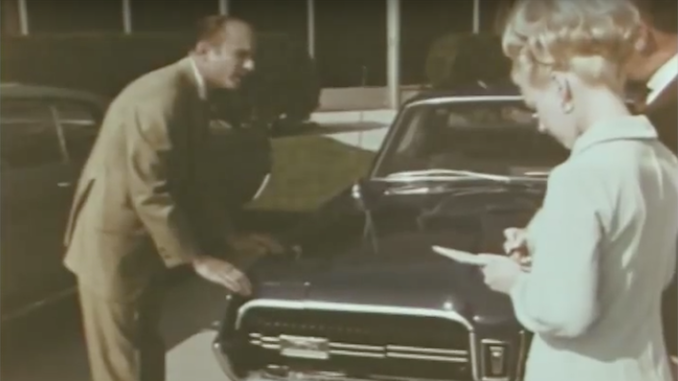From Steve Almi at Indie Auto:
“I am fascinated by a late-60s promotional video that has made the blogospheric rounds. The Design Makers — Inside Ford Design, was first posted by Hemmings (Strohl, 2013). A few weeks later the 21-minute film by the Ford Motor Company was also posted by Dean’s Garage (Smith, 2013).
What I found most striking about the posts is how little attention was paid to a basic question: How much has — and hasn’t — the professional culture of auto design changed over the last 50 years?
…the auto industry is still dominated by men. As a case in point, in recent decades women have started to enter the design field. However, Chris Livaudais, executive director of the Industrial Designers Society of America, estimated that only 25-to-35 percent of the group’s members are women (Yeager, 2018).
How can an industry adequately meet the needs of buyers when its designers do not reflect the diversity of the market?
…The 1960s were dominated by racial conflict, so it would make sense for Ford to champion a diverse workforce. However, only one of the designers interviewed was an African-American man. He appeared toward the end of the film. This could be interpreted as tokenism (Wikipedia, 2013).
Just as importantly, I didn’t see any other person of color in the design studios. How could that be given the large African-American population in Motor City?
The Black designer is also presented as the exotic other. He is the only person in the film who is shown in his off-hours working as an artist. In contrast, the white designers are filmed doing more conventional activities such as shopping, car racing and sailing.”
Analysis
Almi does an excellent job breaking down the details of the 1960’s car industry in his article, as well as a good analysis of the film he is referencing for it. He makes careful note of several modern issues with this film, highlighting the racism and sexism that was rampant in many industries during this time. No women working in design studios, and a single black person in the documentary that is highlighted as a token worker.
Steve asks important questions about what this means for the business then, and how we have managed to tackle these problems in our current automotive field. These vehicles are meant to be bought by anyone, so why is it only white men designing and engineering them? He finishes his article with a call to action for “car guys”: that this film is not very good- and you should definitely watch it. There is a lot to be learned and appreciated about our current state of affairs by seeing what it looked like 60 years ago.




